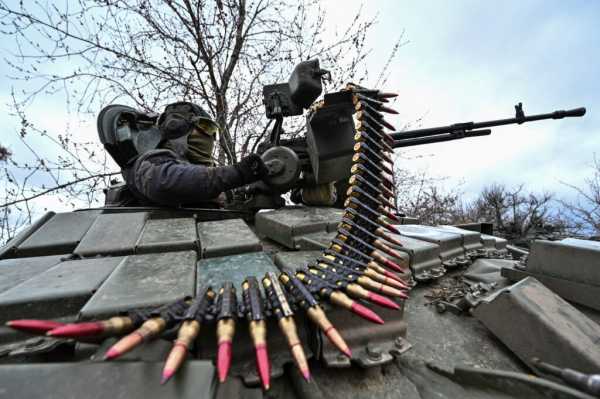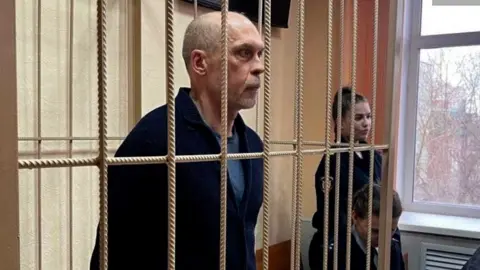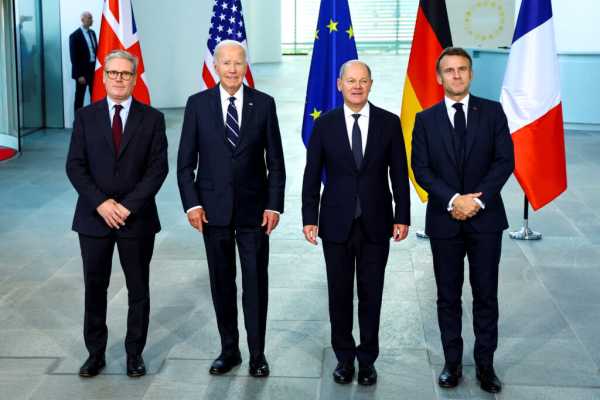
This week’s big news of a major new US aid package has boosted Ukrainian morale considerably and sparked fresh optimism over the country’s military prospects. Indeed, the change in tone across Ukraine and among the country’s partners in recent days has been tangible. During the previous six months, coverage of the war had grown increasingly gloomy as declining Western support forced Ukraine’s outgunned front line troops and air defense crews to ration dwindling supplies of ammunition. With the first deliveries of US weapons expected to reach the front almost immediately, there is now renewed talk of regaining the battlefield initiative.
While this more upbeat mood is certainly welcome, it is vital to maintain a sense of perspective. The $61 billion package adopted by the US Congress will provide Ukraine with a wide range of weapons that should enable the country to prevent any major Russian breakthroughs in the coming months. However, it is only a short-term solution to Russia’s overwhelming advantages in both weapons and manpower. In order to convince Putin that his invasion cannot succeed, US and European leaders must adopt a much more methodical long-term approach to supplying the Ukrainian military. This support needs to be secured against the changing political winds in various Western capitals.
Stay updated
As the world watches the Russian invasion of Ukraine unfold, UkraineAlert delivers the best Atlantic Council expert insight and analysis on Ukraine twice a week directly to your inbox.
Since late 2023, the negative impact of delaying military aid to Ukraine has been all too apparent. With Ukrainian troops often at a ten-to-one disadvantage in terms of artillery firepower, Russia has been able to advance at various points along the approximately 1000 kilometer front line of the war, capturing the town of Avdiivka in February and pushing further forward in recent weeks. Russian commanders have also taken advantage of growing gaps in Ukraine’s air defenses to launch a new bombing campaign targeting the country’s cities and civilian energy infrastructure. This has led to the destruction of multiple power plants, sparking fears of a looming humanitarian catastrophe.
As soon as it begins to arrive in the coming days, US aid will go some way to addressing the most immediate challenges facing Ukraine. The package approved this week in Washington DC includes air defense systems and interceptor ammunition that will help protect residential areas and vital infrastructure from further Russian bombardment. Likewise, the delivery of artillery shells and long-range missiles should make it far more difficult for the Russian army to advance and occupy additional Ukrainian territory. Russian dominance of the skies above the battlefields of eastern and southern Ukraine will also soon become increasingly contested.
At the same time, this new US military aid package will not provide Ukraine with anything like the quantities it needs to defeat Russia. This has been a problem ever since the start of the Russian invasion in February 2022. While the West has provided significant amounts of military aid, weapons have consistently been delivered to Ukraine after extended delays and in insufficient quantities. The first meeting of the Ukraine Defense Contact Group, which brings together more than 50 countries in support of Ukraine, did not take place until more than two months after the onset of Russia’s invasion. It would be almost a year before NATO member countries agreed to supply Ukraine with a modest number of modern tanks. With the invasion now in its third year, Ukraine is still waiting for the arrival of the first F-16 fighter jets.
Eurasia Center events

Public Event Mon, April 29, 2024 • 3:00 pm ET A fireside chat with Mikhail Khodorkovsky, Russian Anti-War Committee founder Political Reform Politics & Diplomacy Russia Ukraine
The underwhelming international response to Russia’s invasion has led to accusations that Ukraine’s partners seek to provide Kyiv with sufficient weapons to avoid defeat but not enough to actually win. This cautious approach is primarily due the West’s well-documented fear of escalation. It also reflects widespread concerns over the potentially destabilizing geopolitical consequences of a Ukrainian victory.
Many in the West seem to sincerely believe that if confronted by the prospect of imminent battlefield defeat, a desperate Vladimir Putin may be prepared to use nuclear weapons. Putin himself has skillfully exploited these fears, intimidating Western leaders into self-deterrence with his frequent and thinly-veiled nuclear threats. Meanwhile, if Russia does lose the war, there is considerable anxiety that this could lead to the collapse of the Putin regime and the breakup of the Russian Federation into a series of smaller successor states. Faced with these nightmare scenarios, Kyiv’s Western backers have repeatedly shied away from bold decisions that could have turned the tide of the war decisively in Ukraine’s favor.
Russia’s war effort suffers from no such uncertainty or indecision. On the contrary, Putin has succeeded in mobilizing the entire country in support of his invasion. He has moved the Russian economy onto a war footing, and is now comfortably outproducing the far wealthier West in key categories such as artillery shells. The Kremlin-controlled Russian media and the Russian Orthodox Church have led efforts to consolidate popular backing for the invasion of Ukraine, which has been presented to the Russian public as a “holy war” and an existential struggle against the West. With no sign of domestic opposition and ample supplies of both men and equipment, Russia is clearly preparing for a long war.
There are growing indications that Europe now recognizes the scale of the threat posed by Russia. This week, Britain confirmed its largest Ukrainian military aid package to date. In recent months, French President Emmanuel Macron has acknowledged that Ukrainian victory is vital for European security, and has refused to rule out sending French troops. Across Europe, initiatives to boost armament manufacturing are gradually gaining momentum and will lead to far greater production volumes by the end of the current year. This is encouraging but it is not enough.
The recent scare over US aid has underlined the fragility of the current Western approach to arming Ukraine. With the future of US support for Ukraine still uncertain, European leaders must accept a far greater share of the burden. This means taking the necessary steps to move toward a wartime economy capable of supplying the Ukrainian military for years to come. Such a shift is likely to prove politically unpopular with domestic European audiences, but the alternative is even more unpalatable. Unless Putin is stopped in Ukraine, he will go further. Europe can either support Ukraine today or face a resurgent Russia tomorrow, with all the additional costs this would involve.
Peter Dickinson is editor of the Atlantic Council’s UkraineAlert service.
Source: euractiv.com



